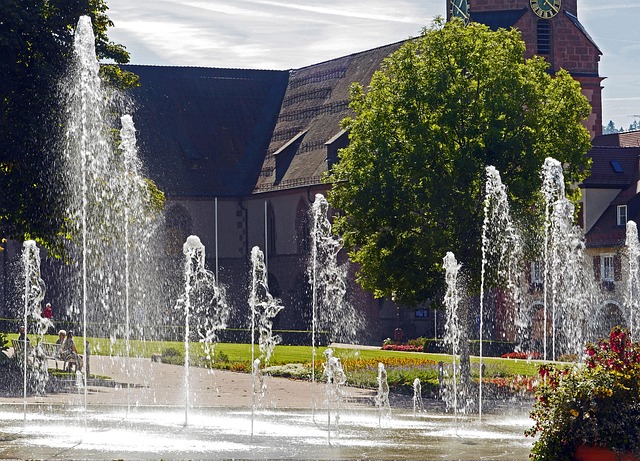In recent years, the buzz around sustainable living has moved well beyond renewable energy and recycled products. A growing number of gardeners, hobbyists, and professional landscapers are turning to *green technologies* to create habitats that are not only visually appealing but also ecologically responsible. By integrating smart systems, renewable power sources, and innovative irrigation methods, these gardens become living examples of how technology can support nature rather than dominate it.
Why Green Technologies Matter for Modern Gardens
The concept of green technologies is simple: apply tools, materials, and methods that reduce environmental impact while enhancing productivity. In the context of gardening, this means a shift from conventional, resource-intensive practices to approaches that conserve water, reduce chemical use, and foster biodiversity.
- Resource Efficiency: Smart irrigation systems and rainwater harvesting lower water consumption.
- Energy Savings: Solar-powered pumps and LED grow lights cut electricity use.
- Pollution Reduction: Composting and biofilters eliminate harmful runoff.
- Enhanced Biodiversity: Habitat corridors and pollinator gardens create thriving ecosystems.
These benefits are not merely theoretical. Studies show that gardens equipped with green technologies can reduce water use by up to 40%, cut energy bills by 25%, and increase pollinator visitation rates by more than 30%.
Core Green Technologies in Contemporary Gardening
While the field is constantly evolving, several technologies have emerged as staples for eco-friendly garden design:
- Smart Irrigation Controllers: These devices monitor soil moisture, weather forecasts, and evapotranspiration rates to dispense water only when necessary. They can be programmed via smartphone apps, allowing real-time adjustments and long-term data collection.
- Solar-Powered Pumps and Lighting: Harnessing solar panels eliminates the need for grid electricity. Solar pumps move water in drip systems or water features, while LED grow lights provide supplemental lighting with a fraction of the energy used by traditional sodium vapor lamps.
- Rainwater Harvesting Systems: Gutters and underground cisterns capture stormwater, which is then filtered and reused for irrigation. Coupled with a smart meter, gardeners can track collection volumes and usage patterns.
- Compost Bins with Aeration: Modern composters use built-in fans or rotating mechanisms to accelerate decomposition, producing nutrient-rich compost in less than a month.
- Permeable Pathways and Green Roofs: These structures allow water to infiltrate rather than run off, reducing the burden on drainage systems and encouraging groundwater recharge.
- Integrated Pest Management (IPM) Sensors: Motion-activated cameras and humidity sensors detect pest outbreaks early, enabling targeted interventions that avoid broad-spectrum chemical sprays.
“Technology is not a replacement for nature; it is a bridge that lets us care for it more effectively.” – Dr. Elena Martinez, Ecological Systems Researcher
Designing a Garden Around Green Technologies
Planning a garden that utilizes green technologies involves several strategic steps. Below is a practical framework that beginners and seasoned designers alike can adapt.
- Assess Site Conditions: Analyze soil type, sun exposure, wind patterns, and existing water drainage. This data informs the selection of plant species and the placement of technology.
- Set Sustainability Goals: Define clear metrics—such as water use reduction, energy savings, or pollinator count—so that progress can be measured objectively.
- Choose Appropriate Tech: Match the garden’s scale with technology size. A small balcony garden might benefit from a solar-powered drip kit, while a larger plot could incorporate a full rainwater harvesting system.
- Integrate Native Species: Native plants require less water and support local fauna, complementing the green technology’s ecological focus.
- Plan for Maintenance: Even the most advanced systems need routine checks. Schedule firmware updates for smart controllers and inspect solar panels for dust buildup.
- Document and Share Results: Keep a log of water usage, energy consumption, and plant performance. Sharing insights encourages community learning and continuous improvement.
Case Study: Urban Rooftop Habitat Powered by Solar and Smart Sensors
In a densely populated city, a multi-story office building was transformed into a vibrant rooftop garden. The designers installed a 3 kW solar array to power an array of sensors and a high-efficiency pump that circulated rainwater collected in a 1,000-liter cistern. Smart irrigation controllers adjusted watering schedules based on real-time soil moisture data.
Within the first year, the rooftop garden achieved a 35% reduction in potable water use compared to conventional sprinkler systems. Additionally, the garden attracted local pollinators—bees, butterflies, and hummingbirds—boosting urban biodiversity. Employees reported improved air quality and reduced stress levels, illustrating the multifaceted benefits of integrating green technologies into urban landscapes.
Challenges and How to Overcome Them
While green technologies offer numerous advantages, they can also pose challenges, especially for newcomers. Understanding and addressing these hurdles ensures successful implementation.
- Initial Investment: Upfront costs for solar panels, smart controllers, and rain barrels can be significant. However, many municipalities offer rebates, tax credits, or low-interest loans that offset these expenses.
- Technical Complexity: Installing and configuring systems may require specialized knowledge. Engaging local experts or attending workshops can bridge the learning gap.
- Maintenance Demands: Technology requires upkeep—cleaning solar panels, updating software, and inspecting sensors. Developing a maintenance schedule and assigning responsibilities mitigates this issue.
- Climate Variability: In regions with unpredictable rainfall, rainwater harvesting alone may be insufficient. Combining it with efficient irrigation systems ensures resilience.
- Data Overload: Smart devices generate vast amounts of data. Prioritizing key performance indicators and using user-friendly dashboards prevents information fatigue.
Future Trends in Green Technologies for Gardens
As research and innovation accelerate, several emerging trends promise to reshape eco-friendly gardening.
- Artificial Intelligence (AI) Optimization: AI algorithms can analyze weather patterns, plant growth rates, and soil health to dynamically adjust irrigation and fertilization schedules.
- Biodegradable Sensor Materials: Sensors made from natural polymers will reduce electronic waste while providing accurate environmental monitoring.
- Vertical Gardens with Integrated Energy Production: Combining vertical planting systems with micro-scale wind turbines or photovoltaic panels creates self-sustaining habitats.
- Blockchain for Supply Chain Transparency: Tracking the origin of seeds and materials ensures ethical sourcing and promotes sustainability across the gardening industry.
- Expanded Use of Smart Greenhouses: Controlled environments that use climate data to optimize plant growth are becoming more affordable and accessible to home gardeners.
These developments will likely make green technologies more affordable, user-friendly, and deeply integrated into the everyday practices of gardeners worldwide.
Conclusion: The Symbiosis of Technology and Nature
Adopting green technologies in gardening is no longer a niche choice; it is becoming an essential strategy for building resilient, productive, and harmonious habitats. By carefully selecting tools that align with ecological principles—such as smart irrigation, solar power, and composting systems—gardeners can achieve substantial savings, reduce environmental footprints, and foster biodiversity.
The journey toward sustainable gardening is iterative. It involves continuous learning, adaptation, and sharing of best practices. As more individuals and communities experiment with and refine these technologies, the collective knowledge will grow, leading to richer, more sustainable green spaces that benefit both people and the planet.



